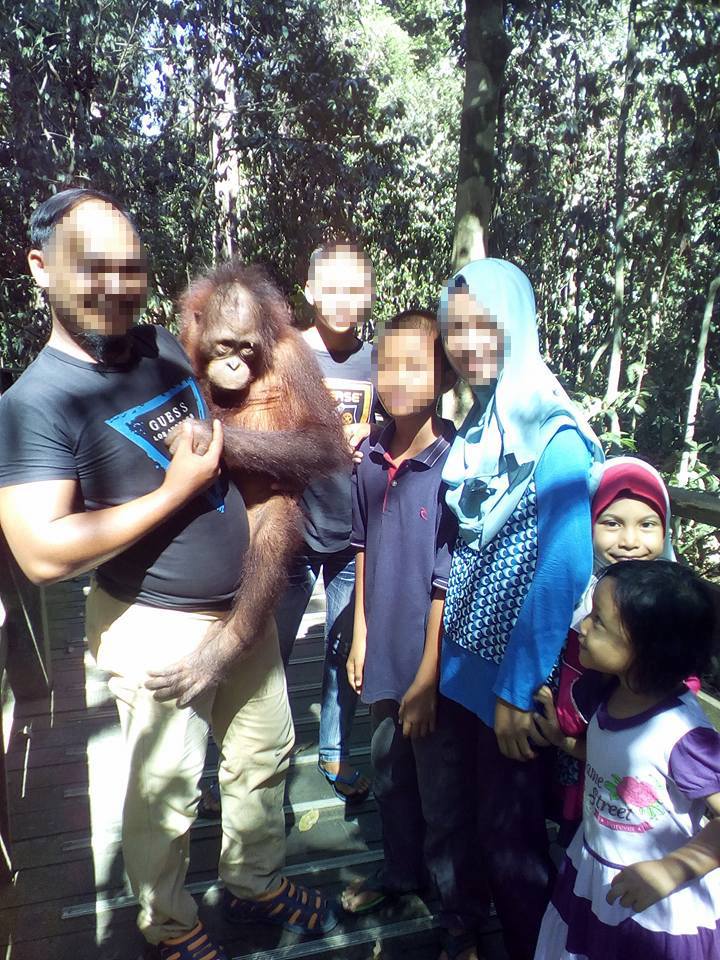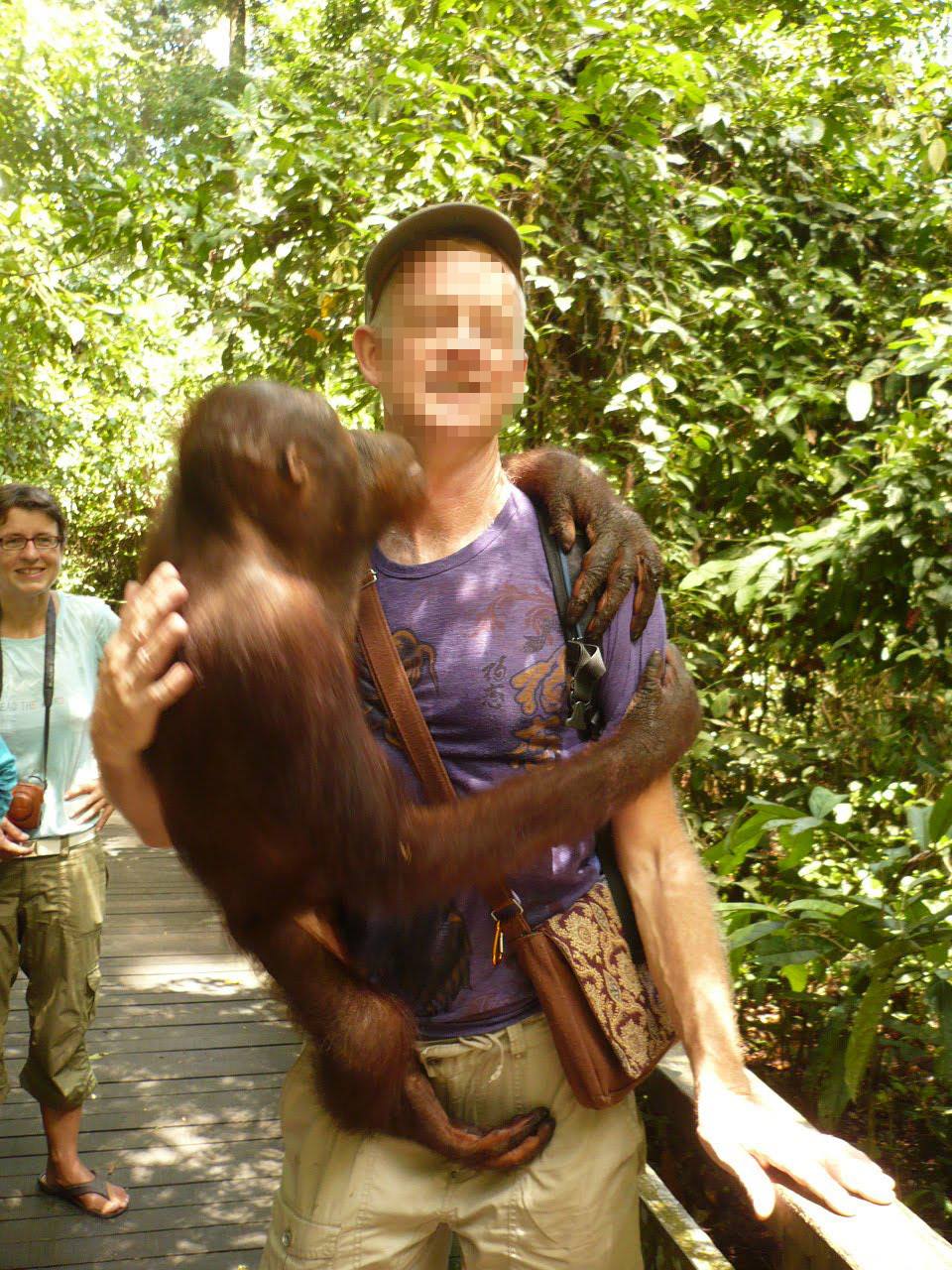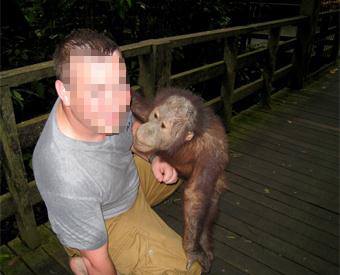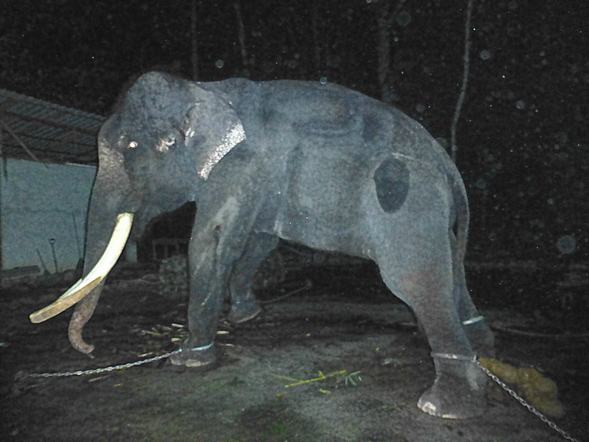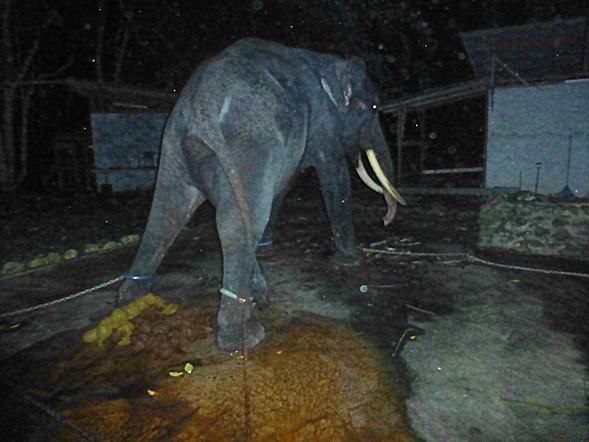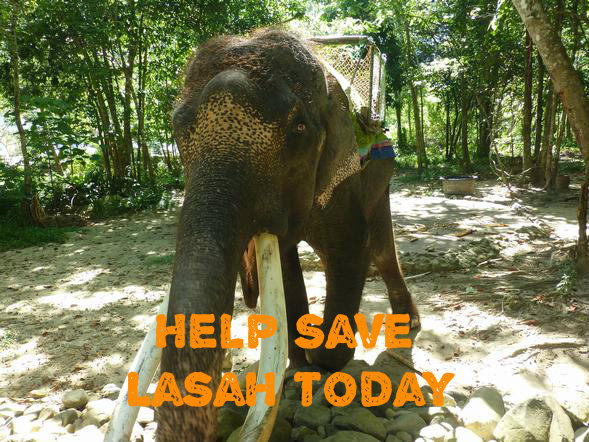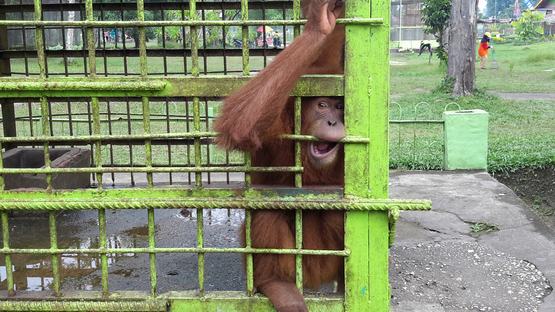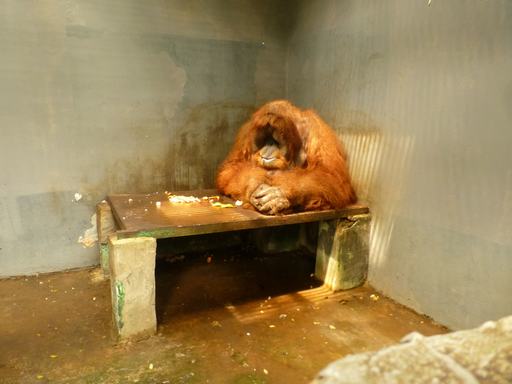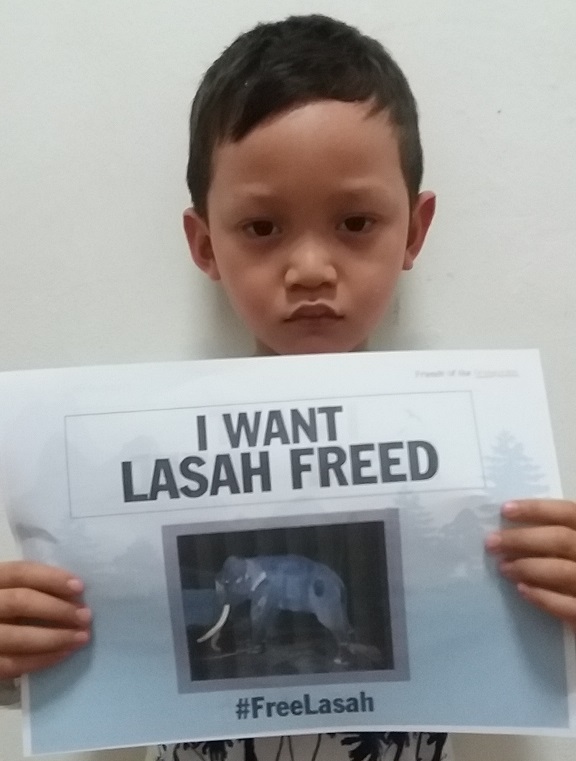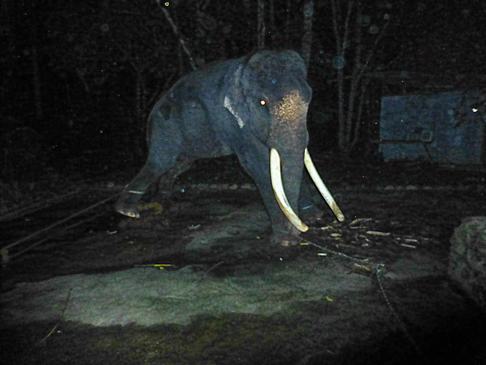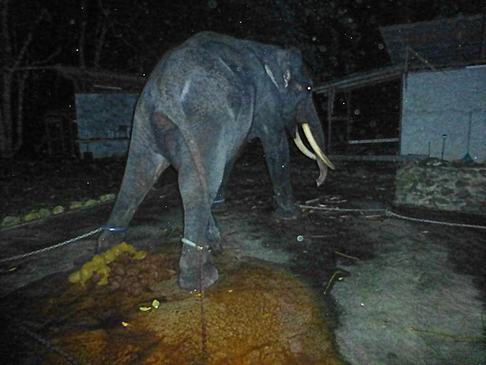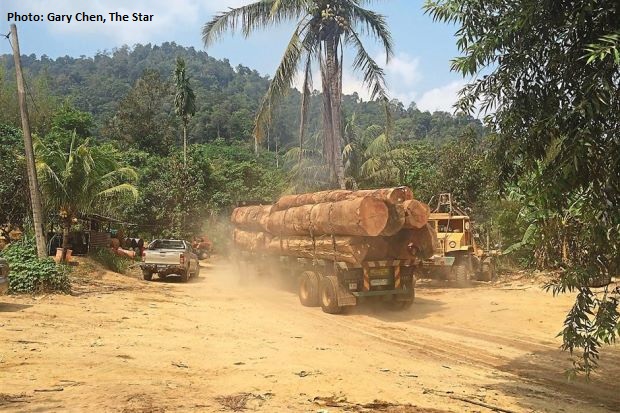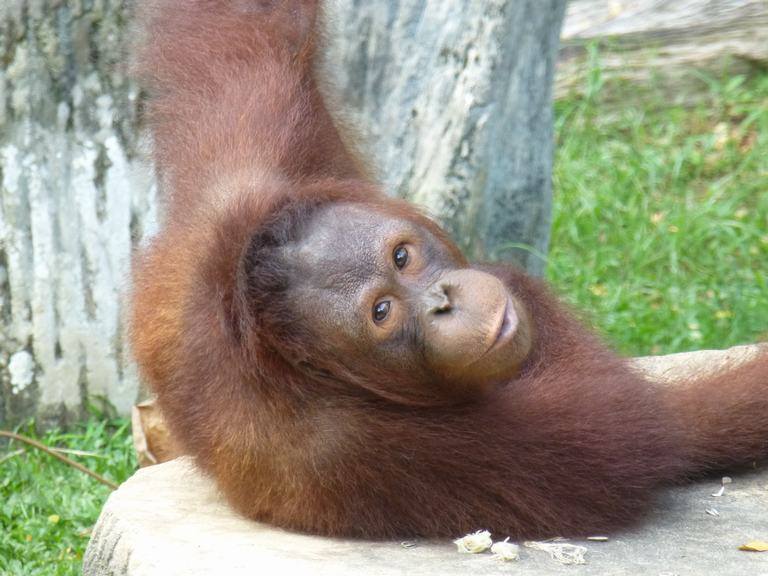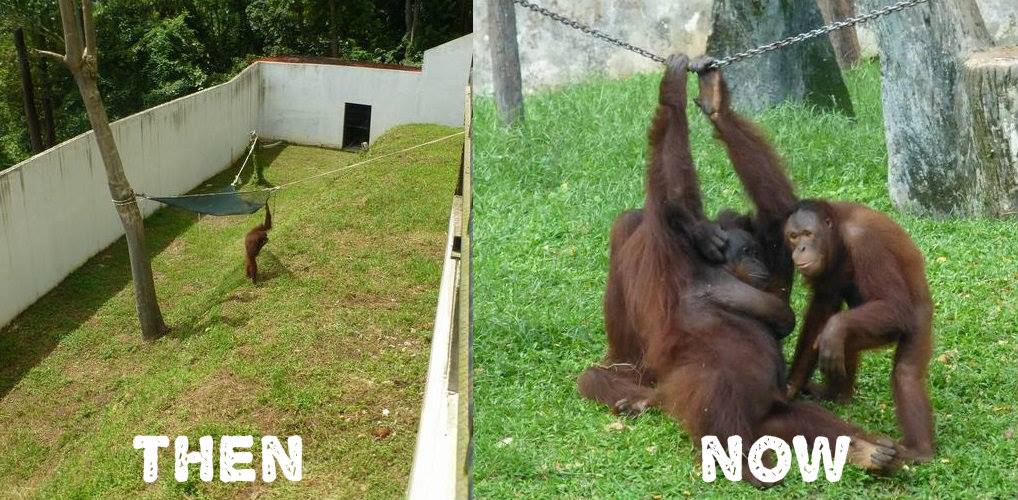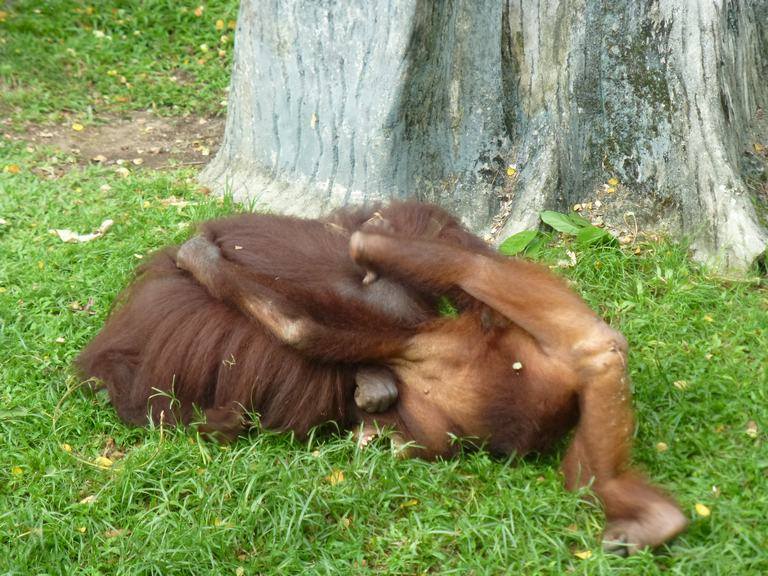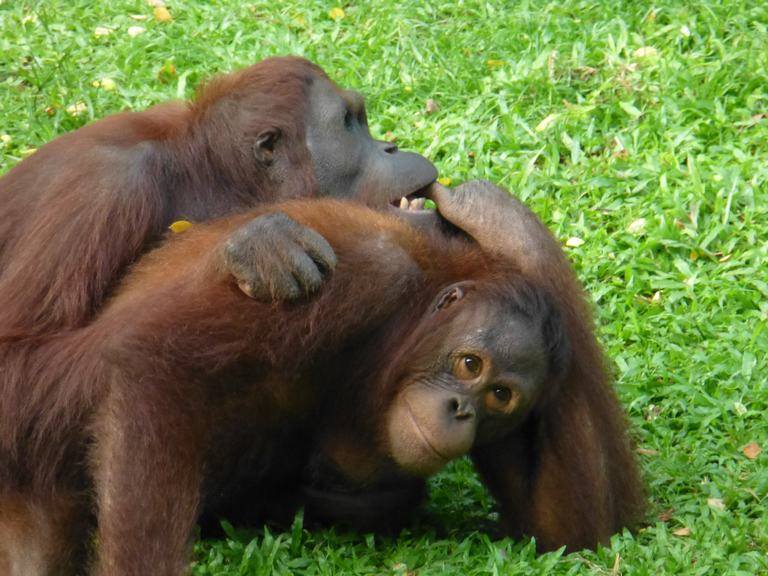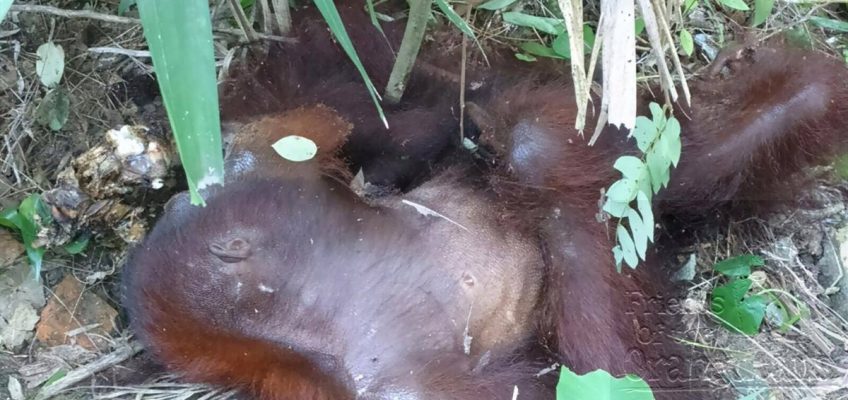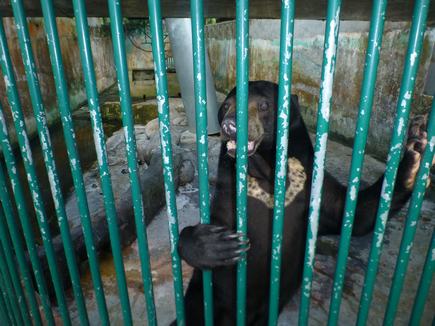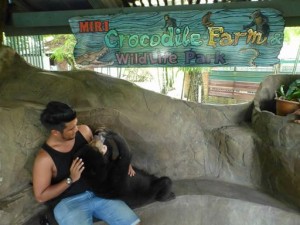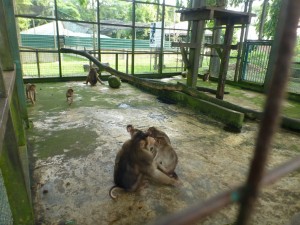What’s wrong with visiting orangutan (and other great ape) rehabilitation centres? Orangutans undergoing rehabilitation should not/must not be exposed to the public for two reasons:
1. Risk of disease transmission – orangutans who contract diseases such as hepatitis, tuberculosis and influenza (from humans or other orangutans) may not be releasable into the wild and doomed to a lifetime of captivity. Humans can also get infected by orangutans as we share 97% of their DNA.
2. Habituation to humans – Habituated orangutans may fail rehabilitation and never make it back into the wild. It is for this reason ethical and responsible orangutan rehabilitation centres such as International Animal Rescue’s orangutan rehabilitation centre in Kalimantan, Indonesia, does not allow any form of tourism and strictly control the presence of people unconnected to their centres. To make matters worse, the Sepilok Orangutan Rehabilitation Centre (SORC) in the East Malaysian state of Sabah allows rotating volunteers to be part of the rehabilitation process. These individuals pay to volunteer at SORC for four weeks and there are a maximum of twelve people in a group. Click here to know why this can have an impact on the rehabilitant apes at SORC.
Please reconsider visiting or volunteering at rehabilitation centres which offer hands-on activities with rehabilitant orangutans, such as at SORC. The Sabah Wildlife Department, which manages SORC, is aware that tourism must not be allowed in great ape rehabilitation centres. Besides, the tourism at SORC doesn’t abide by the “Best practice guidelines for great ape tourism” by the International Union for Conservation of Nature [IUCN]. See here for more details. If you want to see orangutans in Malaysia, see them in the wild, like at Kinabatangan in Sabah, Malaysia.
Please also read Orangutan Project’s excellent article on human-orangutan contact and its consequences, click here to read.
Three photos in this post of visitors to Sepilok in contact with orangutans.
